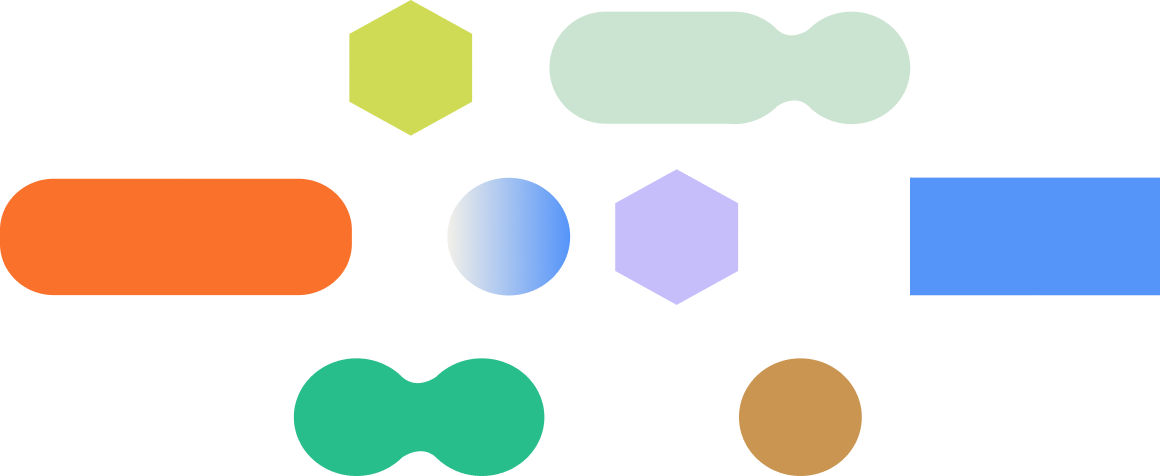Interested in seeing if you or a loved one qualifies for a bipolar depression clinical trial? Fill out the survey to see if you qualify.

Living With Bipolar Depression? Clinical Trials May Offer A New Path Forward
Whether it’s you or someone you love who is living with bipolar disorder with depression (BD-D), you know how overwhelming the lows can be. Managing … episodes of depression can at times feel more challenging or longer lasting than the manic episodes, and can cause sufferers to feel alone — despite the fact that BD-D affects around 1% of the adult population in any given year.1. For nearly half of people diagnosed with bipolar depression, taking treatments that are currently available will not help them reach full remission. But researchers are working to develop new care options — and volunteers are helping advance scientific research by participating in clinical trials every day.2.
How Clinical Trials Work
Thank you for your interest in learning more about bipolar disorder with depression clinical trials! Every day, academic institutions, pharmacological organizations and private research facilities across the country are diligently working on making breakthroughs in the study of BD-D in various clinical trials.
Here’s a look at what a clinical trial for BD-D might involve:
WHO CAN PARTICIPATE?
Here are some of the qualifications interested potential participants need to meet in order to join a clinical research study for BD-D:

- Be between the ages of 18 – 70 years old
- Have an existing diagnosis of bipolar disorder with depression (BD-I or BD-II) and are currently depressed
- If taking a mood stabilizer and/or atypical antipsychotic for a period of 6 weeks or more, have not had any dose modifications in the past 2 weeks
- Are willing to comply with all study assessments and procedures
- Must not be pregnant or breastfeeding
Additional eligibility criteria apply. Learn more about if you or a loved one may qualify for participation in a BD-D clinical trial.
Clinical Trials Make A Difference
Participation in a clinical study provides valuable information that could eventually lead to a better treatment and — with the right advancements — to better outcomes. Take our short survey to see if you or a loved one may be a good fit. There is no obligation to enroll.
Understanding Bipolar Disorder with Depression (BD-D)
WHAT IT IS
Bipolar depression is a phase of bipolar disorder (formerly known as manic depression) that causes distinct shifts in a person’s mood, activity levels, sleep patterns, energy, and concentration. It is diagnosed based on a history of mania or hypomania and the presence of a current major depressive episode. People with bipolar disorder often experience periods of being especially “up,” feeling elated, irritable, or having extremely energized behavior (known as manic episodes), as well as very “down,” sad, indifferent, or hopeless stretches (known as depressive episodes).3. Symptoms can impair sufferers’ functioning at work or school, their social and personal relationships, as well as other important areas of daily life. In addition to feeling sad or hopeless, being low energy, disruptions in sleep patterns and difficulty focusing or making decisions, depressive episodes may also involve having a marked loss of interest in things you normally enjoy, losing or gaining a lot of weight, feeling restless, irritability, feelings of worthlessness or guilt, and suicidal ideation.4.
HOW IS IT TREATED?
Bipolar disorder with depression is typically treated with a combination of approaches: medication, psychotherapy, as well as lifestyle adjustments. Mood stabilizers and atypical antipsychotics are often used in combination with antidepressants, though patients should be cautiously monitored to avoid triggering manic episodes or rapid cycling. Psychotherapy such as cognitive behavioral therapy (CBT) and interpersonal therapy can also be utilized for help with coping mechanisms. Additionally, light therapy, transcranial magnetic stimulation (TMS) and electroconvulsive therapy (ECT) have been helpful for some patients in helping navigate their symptoms.5. No complementary lifestyle measures have been formally approved to treat bipolar disorder, however some individuals have explored options like dietary supplements, herbs, yoga, acupuncture, exercise, and relaxation techniques to manage stress. In recent years many people have also turned to clinical trials to shed more light on this condition, and how best to help navigate it.
POSSIBLE HOPE FOR THE FUTURE
Clinical research participation is an important part of developing new treatments. To assess the safety and effectiveness of new drugs, research requires volunteers whose role in participating provides new understanding that may potentially help treat BD-D. Clinical trials play a key part in determining the efficacy of those novel treatments, and helping to get them to market. Research never rests, and we are hopeful for what new data and insights may reveal about the landscape of this condition.
#1
Depression overall is the number one contributor to disability worldwide.6. Episodes of depression are a major component of bipolar disorder and account for the majority of time spent unwell for individual sufferers.7.
FREQUENTLY ASKED QUESTIONS
What are the symptoms of bipolar disorder with depression (BD-D)?
BD-D is characterized by periods of intense sadness, hopelessness, and loss of interest in activities, similar to major depressive disorder, but occurring within the context of bipolar disorder.
Signs may include:
- Persistent low mood
- Fatigue
- Change in appetite
- Sleeping much more or much less than usual
- Feelings of worthlessness
- Difficulty concentrating or making decisions
Individuals with BD-D may also experience irritability, restlessness, and racing thoughts, which are attributable to manic or hypomanic episodes, creating a mixed mental state.8.
Who may be a good candidate to apply for a BD-D clinical trial?
You may consider applying for a bipolar depression clinical research study if you or a loved one:
- Are between the ages of 18 – 70
- Have an existing diagnosis of bipolar disorder with depression (BD-I or BD-II) and are currently depressed
- If taking a mood stabilizer and/or atypical antipsychotic for a period of 6 weeks or more, have not had any dose modifications in the past 2 weeks
- Are willing to comply with all study assessments and procedures
- Are not pregnant or breastfeeding
What will happen during a clinical trial for bipolar disorder with depression?
Most clinical trials will first involve frontline screening to confirm that a potential patient is, in fact, a match for that study’s criteria. Once verified and the patient has signed an Informed Consent Form, which clearly provides the details and purpose of the study to that individual and what it involves, participants should expect to attend scheduled appointments at a clinician’s office. They will also receive a prescribed medication (called an investigational treatment or study drug), and undergo additional screening and regular follow-up monitoring from a clinician and/or research staff. Throughout the study, participants should experience a professional clinical environment, and be treated with compassion and respect.
Are there any costs to participate in a clinical research study?
There is no cost to participate in a clinical trial. Participants receive all study-related medical care and medications for the duration of the study at no cost. Likewise in many instances, participants may also receive reimbursement for time and travel.
Still Have Questions?
Contact us anytime at help@clinicalenrollment.com.
- Source: Merikangas KR, Akiskal HS, Angst J, et al. Lifetime and 12-month prevalence of bipolar spectrum disorder in the National Comorbidity Survey replication [published correction appears in Arch Gen Psychiatry. 2007 Sep;64(9):1039]. Arch Gen Psychiatry. 2007;64(5):543-552
- Source: McElroy SL, et al. (2018). Clinical characteristics and treatment response in patients with bipolar depression: A review of recent studies. Journal of Affective Disorders, 229, 386–397.
- Source: https://www.nimh.nih.gov/health/topics/bipolar-disorder
- Source: https://www.mayoclinic.org/diseases-conditions/bipolar-disorder/symptoms-causes/syc-20355955#:~:text=Overview,the%20ability%20to%20think%20clearly.
- Source: https://www.nimh.nih.gov/health/publications/bipolar-disorder#:~:text=Different%20medications%20may%20be%20used,Drug%20Administration%20(FDA)%20website%20.
- Source: Institute of Health Metrics and Evaluation. Global Health Data Exchange (GHDx).
http://ghdx.healthdata.org/gbd-results-tool?params=gbd-api-2019-permalink/d780dffbe8a381b25e1416884959e88b (Accessed 1 May 2021). - Source: https://journals.lww.com/jaanp/fulltext/2020/10000/is_it_depression_or_is_it_bipolar_depression_.12.aspx#:~:text=
Prevalence%20and%20time%20spent%20unwell,et%20al.%2C%202015).&text=Proportion%20of%20time%20spent%20in,episodes%20(Post%2C%202005). - Source: https://pmc.ncbi.nlm.nih.gov/articles/PMC9358943/#:~:text=Conclusion,depressed%20than%20manic%20or%20hypomanic.&text=
For%20this%20reason%2C%20both%20the,of%20weighing%20specific%20adverse%20effects.

